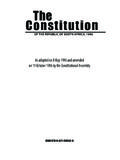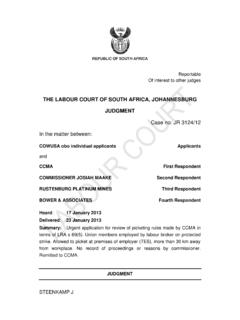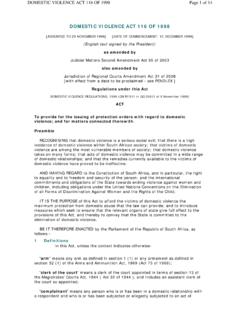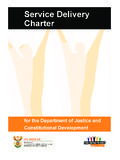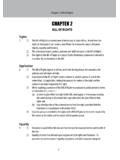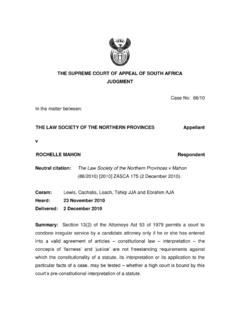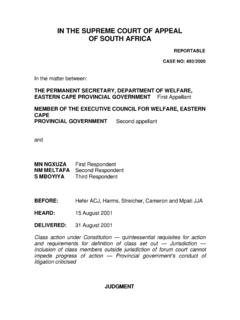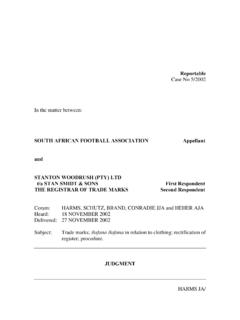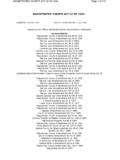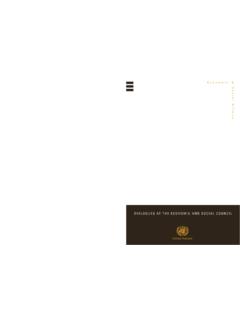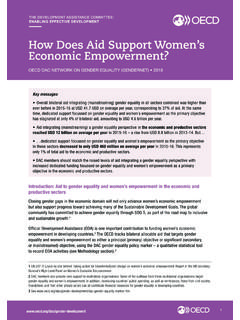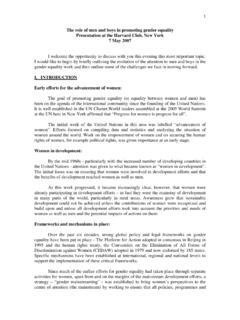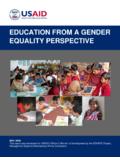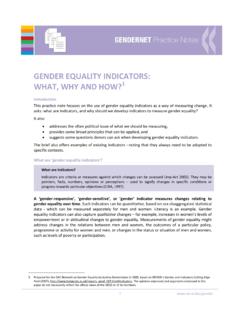Transcription of Second Edition - Justice Home
1 Second Edition gender Policy Statement Balancing the scales of Justice through gender equality the doj & cd Department: Justice and Constitutional Development REPUBLIC OF SOUTH AFRICA. gender Policy Statement Department of Justice and Constitutional Development Contents Foreword v Acknowledgements vi CHAPTER 1: INTRODUCTION. 1. Purpose of the gender Policy Statement 1. 2. Historical Background 2. 3. Background to the gender Policy Statement 2. 4. Scope of Application of the gender Policy Statement 3. 3. 5. Relationship with Justice Vision 2000. 4. 6. Basic Contents of the gender Policy Statement 4.
2 7. Structure of the gender Policy Statement CHAPTER 2: Guiding Principles 1. Introduction 6. 2. The South African Constitution 6. 3. National gender Policy Document 6. 4. Other National Instruments 6. 7. 5. International Human Rights Instruments 8. 6. gender Mission Statement CHAPTER 3: SERVICE DELIVERY AND THE LEGAL SYSTEM. 1. Our Vision 9. 2 Critical Areas of Concern 9. Violence Against Women 9. Victim Support and Empowerment 19. 24. Family Law 30. Access to Justice 41. Working with Civil Society CHAPTER 4: EMPLOYMENT OPPORTUNITIES AND DECISION-MAKING. 1.
3 Our Vision 44. 2. Critical Areas of concern 44. Employment Equity 44. Sexual Harassment 49. 51. Responsive Dispute Resolution Mechanisms 52. gender Equity in the Distribution of State Contracts 53. Involving Women in Decision-Making iii CHAPTER 5: INSTITUTIONAL TRANSFORMATION AND MONITORING. 1. Our Vision 55. 2. Policy and Administrative Changes 55. Entrenchment of gender equality Analysis 55. gender Budget 56. gender Unit and Other Implementation Strategies 57. The Judiciary and Judicial System 58. International and Inter-Sectoral Cooperation 59. CHAPTER 6: CONSULTATIONS AND BIBLIOGRAPHY.
4 1. List of Consultations and Written Inputs 60. 2. Selected References 61. iv Foreword In May 1997 Cabinet approved Justice Vision 2000, the strategy to guide the transformation of the Department of Justice and the Justice system. One of the key values underpinning the vision is articulated in Justice Vision 2000, is the pursuit of gender equality . Various aspects of Justice Vision 2000 deal with gender inequality, and outline specific activities that we will implement in order to eradicate it. The overarching aim in the eradication of gender inequality being to bring about a truly non-sexist society.
5 This is what is envisaged in the South African Constitution and various international human rights instruments, particularly the Convention on the Elimination of All Forms of Discrimination Against Women (CEDAW). However, we realise that a broad strategic framework such as the one articulated in Justice Vision 2000, cannot provide adequate guidance on specific issues such as gender equality and inequality. That is why we have developed this gender Policy Statement. It deals with specific issues of gender equality in the Justice system. It will help us to ensure that the gender equality objectives contained in Justice Vision 2000 can be implemented effectively, and should therefore be read in conjunction with Justice Vision 2000.
6 In developing our gender Policy Statement we consulted individuals and groups inside and outside the Department. Civil society stakeholders who attended the many consultative workshops included: Traditional leaders Organised labour The legal profession Religious leaders The rural women's movement The business community It gives us great pleasure to release our gender Policy Statement. It is based on our belief that the essence of true equality lies in the accommodation of difference and disadvantage. We sincerely hope that through its implementation, we will one day be able to take pride in a new Justice system as one of the instruments that has contributed significantly to improving the quality of life for women in this country, and thus in reducing gender inequality.
7 Please join us in the implementation and monitoring partnership. DR DULLAH OMAR, MP DR MANTO TSHABALALA-MSIMANG, MP. Minister of Justice Deputy Minister of Justice Cape Town: March 1999. v Acknowledgements We wish to express our gratitude to the gender Directorate in the Department of Justice for shouldering the responsibility of putting the policy statement together. At the time of drafting, the Directorate was headed by Ms Zelda Moletsane. She was assisted by Ms Zoe Rathus, an Australian consultant initially seconded by the Commonwealth Secretariat and subsequently by the Australian Government, Ms Ntsiki Mayaba, Ms Ooshara Sewpaul and Ms Joey Rabalao.
8 The policy statement also benefited from the work of an Internal Review Team. This was convened by Dr Manto Tshabalala- Msimang, the Deputy Minister of Justice , and included Advocate Palesa Sedibe-Ncholo, Ms Joyce Maluleke, Ms Bonisiwe Makhene and Ms Thuli Madonsela. Ms Madonsela also put the final document together. Dr Cathy Albertyn and Advocate Patricia Lambert assisted with editing of the final document. Advocate Lambert also assisted in the simplification and formatting process. Members of the public, personnel in the Department of Justice and various members of parliament have also enriched the document through oral and written comments.
9 Some NGOs conducted workshops on the first draft of the Policy as well as on Justice Vision 2000, and passed their comments on to us. To all of these people we say a sincere thank you. Our sincere gratitude also goes to the United States Agency for International Aid (USAID) for making funding available for the consultative process, and to the Swiss Development Agency for making it possible to publish the Policy and to kick-start the process of integrating it into the institutional culture of the Department. We have also been supported by the governments and donor agencies of Norway, Denmark, Sweden and Canada.
10 The Department of Justice deeply appreciates the enthusiasm shown by the public in the development of the policy and hopes that the same enthusiasm will accompany its implementation and monitoring. vi CHAPTER 1. INTRODUCTION. 1. THE PURPOSE OF THE gender in order to achieve fair play between men and women. This approach is consistent with the Constitution and CEDAW. It POLICY STATEMENT. acknowledges that: The purpose of the Department of Justice 's gender Policy The current systemic inequalities, resulting from Statement is to bring a gender perspective into all aspects centuries of legalised injustice against women, cannot of planning, policy, legislation development, and the simply be eliminated by the identical treatment of men transformation of the Justice system.

